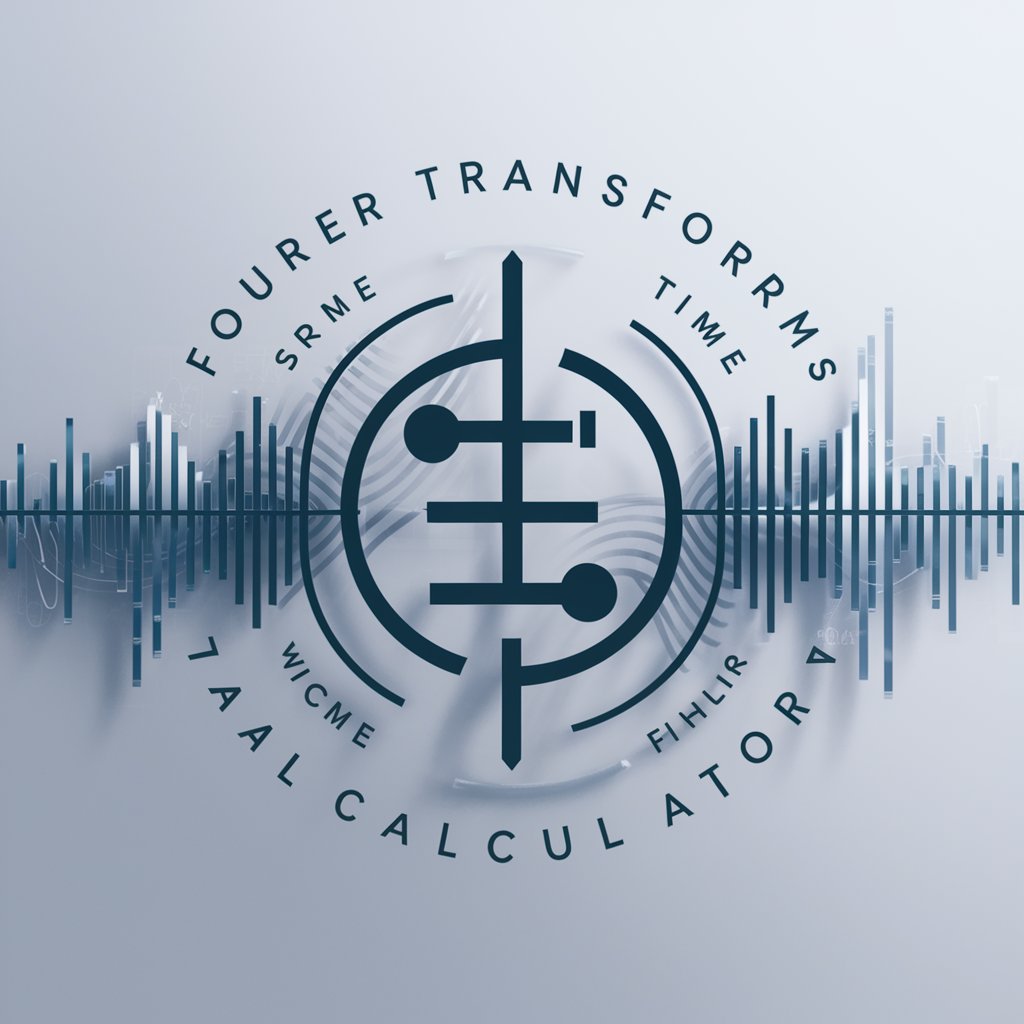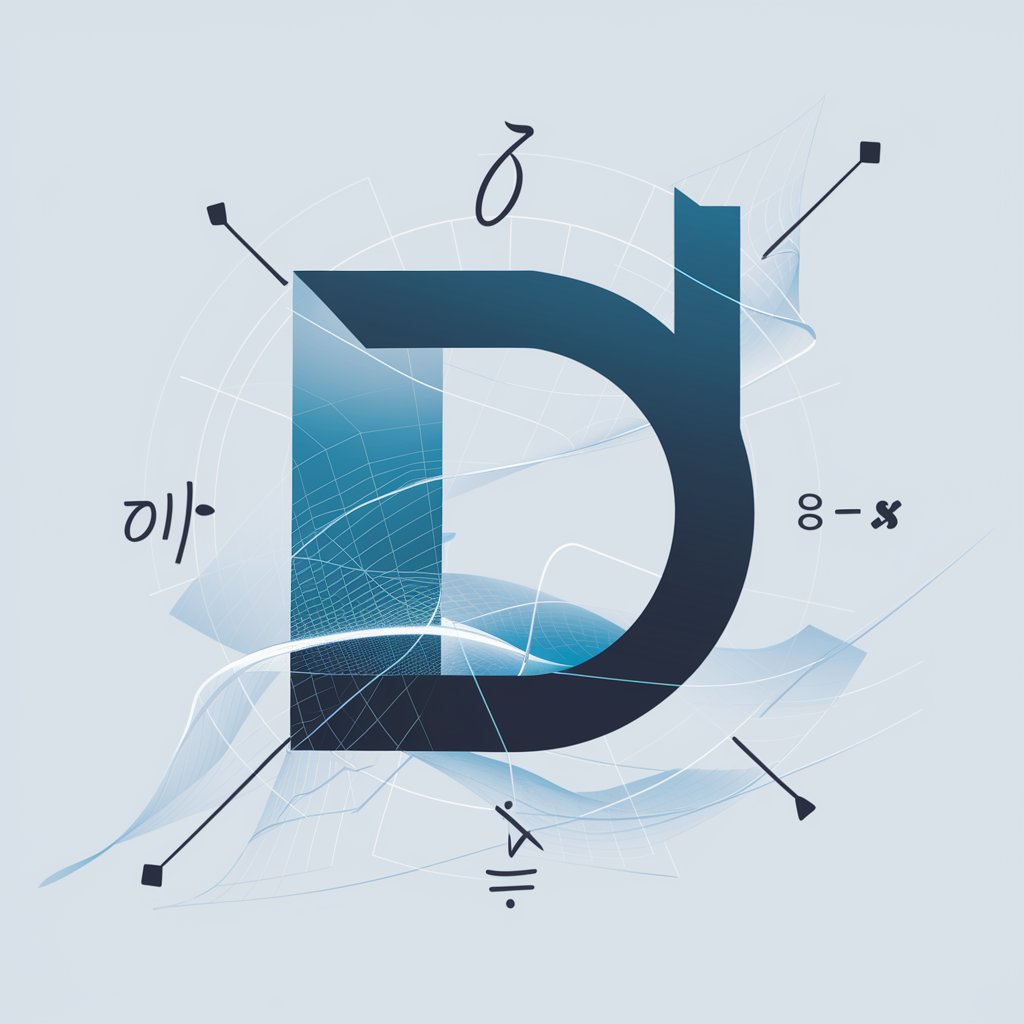
Fourier Transforms Calculator - time-frequency domain calculator

Welcome! Let's transform your signals between time and frequency domains.
Transforming data with AI precision
Calculate the Fourier Transform of
Find the inverse Fourier Transform for
Determine the frequency-domain representation of
Compute the Discrete-Time Fourier Transform (DTFT) for
Get Embed Code
Overview of Fourier Transforms Calculator
The Fourier Transforms Calculator is designed to assist in converting signals between the time domain and the frequency domain using the Fourier Transform and its inverse. This tool calculates the Fourier Transform (FT) of a given time-domain function, f(t), to its frequency-domain representation, F(ω), and vice versa. For example, if you input a simple time-domain function like f(t) = e^{-at} (where a > 0 is a constant), the calculator would provide its frequency-domain counterpart F(ω) = \(\frac{1}{a + iω}\). This example illustrates the tool's ability to handle exponential decay signals, which are common in both engineering and physics to describe dissipative systems. Powered by ChatGPT-4o。

Key Functions of the Fourier Transforms Calculator
Fourier Transform
Example
Given f(t) = cos(ω₀t), the calculator computes F(ω) = π [δ(ω - ω₀) + δ(ω + ω₀)].
Scenario
Useful in signal processing, where determining the frequency components of a signal is essential for filtering and communication applications.
Inverse Fourier Transform
Example
For F(ω) = \(\frac{1}{\sqrt{2π}(σ² + iω)}\), it provides the time-domain function f(t) = e^{-σ²|t|}.
Scenario
Important in physics and engineering, especially when reconstructing signals after frequency domain operations like filtering or equalization.
Discrete-Time Fourier Transform (DTFT)
Example
Given a sequence x[n] = u[n] (unit step function), the calculator can provide X(e^{iω}) = \(\frac{1}{1 - e^{-iω}}\), appropriately adjusted for the discrete nature of the signal.
Scenario
Critical in digital signal processing for analyzing sequences that represent digital signals, aiding in the development of algorithms for digital audio, speech processing, and other applications.
Target Users of Fourier Transforms Calculator
Students and Educators in STEM
Students learning about signal processing, physics, or electrical engineering can use this tool to better understand the practical applications of Fourier Transforms in their coursework. Educators can use it to demonstrate these concepts dynamically in class.
Engineers and Scientists
Professionals in fields that require signal analysis, such as telecommunications, seismology, or biomedical engineering, benefit from the calculator by using it to quickly transform signals, analyze system behaviors, or model physical phenomena.
Researchers in Signal Processing
Researchers focusing on theoretical or applied aspects of signal processing can use the calculator to simulate and analyze various signal behaviors without manually calculating complex integrals, thus speeding up hypothesis testing and experimental analysis.

How to Use the Fourier Transforms Calculator
Start Here
Visit yeschat.ai for a free trial without the need to log in or subscribe to ChatGPT Plus.
Enter Function
Input your time-domain function, f(t), or frequency-domain function, F(w), into the designated text box.
Choose Transformation
Select whether you want to calculate the Fourier Transform to move from time-domain to frequency-domain, or the inverse Fourier Transform for the opposite.
Review Results
Submit your function for processing. The result, either F(w) or f(t), will be displayed promptly.
Utilize Features
Take advantage of additional features like graph views, detailed explanations, and comparisons for deeper understanding and analysis.
Try other advanced and practical GPTs
Lean Startup Navigator
Accelerate Startup Success with AI

Realistic Photo Creator
Bring Your Visions to Life with AI

Cover Letter Composer
Craft Your Professional Introduction with AI

Gritty RPG Character Artist
Create Dark, Gritty RPG Characters Powered by AI

Scriptcase developer
AI-Powered Development Environment for PHP Applications.

Prin.C - GPT
Transform wisdom into actionable execution with AI-powered marketing insights.

History Guide
Bringing History to Life with AI

Grammar
Perfect Your Text with AI

RFID and NFC Expert
AI-powered advice for RFID and NFC applications.

Traductor Profesional
Translating Professionally, Powering Communication

Norsk Lovdata GPT Advokat ⚖️
AI-Powered Norwegian Legal Guidance

PHP Master (Bora)
Elevate Your Code with AI

Frequently Asked Questions About Fourier Transforms Calculator
What types of functions can I input into the Fourier Transforms Calculator?
You can input any real or complex, continuous or discrete time-domain function into the calculator for Fourier Transform analysis.
Can the calculator handle functions with complex numbers?
Yes, the calculator is designed to handle complex numbers both in time-domain and frequency-domain representations.
How accurate is the Fourier Transforms Calculator?
The calculator uses mathematical algorithms to ensure highly accurate conversions between time and frequency domains, limited only by the precision of the input data.
Is there a limit to the size of the function I can transform?
There's no strict limit, but larger expressions may require more processing time. The system is optimized to handle typical scientific and engineering calculations efficiently.
Can I save the results of my transformations?
While the current version of the tool provides on-the-spot calculations, it does not yet offer a feature to save results. You're encouraged to manually record your results for long-term reference.





